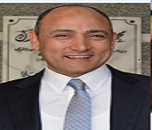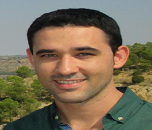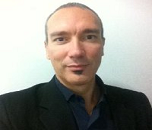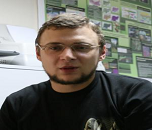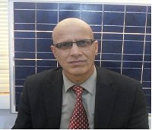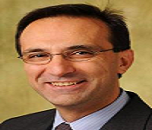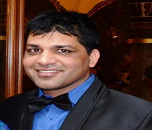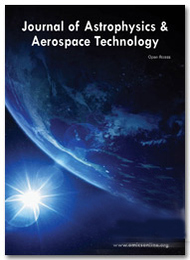Theme: Enlightening the Future Scope of Satellite and Space Research
Satellite-2022
- About Conference
- Why to attend?
- Sessions & Tracks
- Target Audience
- Benefits
- Importance & Scope
- Market Analysis
Conference Series LLC LTD is pleased to invite you to participate in the “International Conference on Satellite and Space Communications” during AUGUST 9-10 at Amsterdam,Netherlands, which will integrate keynote presentations, Oral talks, Poster presentations and Exhibitions and special discussions on a wide range of session themes on Satellite, Space Research. Satellite-2022 aims in proclaim knowledge and share new ideas amongst the professionals, industrialists, and students from research areas of satellite, space and all the related disciplines to share their research experiences and indulge in interactive discussions and special sessions at the event.
Satellite-2022 conference paves a platform to globalize the research by installing a dialogue between industries and academic organizations and knowledge transfer from research to industry. Events include hot topics presentations from all over the world and professional networking with industries, leading working groups and panels. Meet Your Objective Business sector with individuals from and around the globe concentrated on finding out about Satellite, this is the best chance to achieve the biggest collection of members from everywhere throughout the World. Conduct shows, disperse data, meet with current, make a sprinkle with another product offering, and get name acknowledgment at this occasion.
International Conference on Satellite and Space Communications is organizing an outstanding Scientific Exhibition/Program and anticipates the world's leading specialists involved in Satellite and Space Research. Your organization will benefit with excellent exposure to the leaders in Satellite and Space Research. You can update your knowledge about the current situation of Satellite and receive name recognition at this 2-day event. Satellite events are an exciting opportunity to showcase new technology. World-renowned speakers, the most recent techniques, tactics, and the newest updates in Satellite and Space Research fields are hallmarks of this conference
Track 1: Space exploration
Space exploration, the investigation, by means of crewed and uncrewed spacecraft, of the reaches of the universe beyond Earth’s atmosphere and the use of the information so gained to increase knowledge of the cosmos and benefit humanity. The design and manufacturing facilities are located in Southern California, near the Los Angeles spacex airport, and the propulsion development and structural test facilities are located in Central Texas. The Falcon 9 is a 2-stage launch vehicle powered by LOX/RP engines. The first stage generates 765,000 1bf of thrust (sea-level) using nine Merlin engines, and the second stage generates 96,000 1bf (vacuum) using a single Merlin engine. Both stages use gimballed engines for guidance. Falcon 9 offers engine-out capability for the first stage.
Track 2: Future of 3D printing in space
3D printing is very useful for aerospace applications on many aspects. Indeed, it could become a major asset for space travels in the future. In aerospace many applications, challenges, innovations related to 3D printing are tuning pace at a higher rate. Step by step, researchers are looking for different applications to this cutting-edge technology in space whereas additive manufacturing is challenging and requires new technologies and resistant materials. With the two different axis of applications arises variant benefits i.e. 3D printing inside of the station and 3D printing outside of the station. Inside it will play role significantly in their daily life in orbits during space exploration, example- when something is broken, and they need to replace a part, it can be long and expensive to send them what they need so they can simply 3D Print it. It is the same thing if a tool is missing. It would be so much easier and time-saving if they could just 3D print their screwdriver when they need it! Regarding the additive technology outside of the station, A 3D printer working in orbit would allow to come up with or create satellite structures. These machines could be integrated inside Nano satellites. Nano satellites could allow to 3D print structures directly in space as well.
Space Weather | 3D printing | Space Telescope | Earth Science | Astronomy Geostationary orbit | Remote sensing | Weather and Climate Observations | GIS techniques | Climate change
Track 3: Space Missions
Currently, Space Missions are spacecraft exploring Mercury, Mars, Venus, and Saturn, as well as a comet and an asteroid. The Voyager spacecraft are move at high speed out of our solar system, while New Horizons speeds toward a 2015 encounter with Pluto. Closer to home, we have probes in lunar orbit, a handful of solar physics missions, space telescopes, and a small army of Earth-observing satellites. In Earth orbit, the International Space Station continues to soar around the planet with a continually Space Missions staffed crew of astronauts and cosmonauts. Satellite conference covers a wide range of topics to innovative space applications while focusing on Earth observation and satellite navigation.
Solar power forecasting | Orbital variations | Satellite Navigation | Space weather | Space Craft | Satellite Sub-system | Space Radiation
Track 4: Satellite Subsystems
Satellite orbits vary greatly, depending on the purpose of the satellite, and are classified in a number of ways. Well-known (overlapping) classes include low Earth orbit, polar orbit, and geostationary orbit. A launch vehicle is a rocket that throws a satellite into orbit. Usually it lifts off from a launch pad on land. Some are launched at sea from a submarine or a mobile maritime platform, or aboard a plane see air launch to orbit. Satellites are usually semi-independent computer-controlled systems. Satellite subsystems attend many tasks, such as power generation, thermal control, telemetry, attitude control and orbit control.
Aerospace engineering | Satellite Launcher | Astronautical engineering | Aircraft structures | Fluid dynamics | Astrodynamics & Astrophysics
Track 5: Satellite Remote Sensing and GIS
A remote sensing instrument collects information about an object or phenomenon within the instantaneous -field -of-view (IFOV) of the sensor system without being in direct physical contact with it. The sensor is located on a suborbital or satellite platform. A geographic information system (GIS) is a system designed to capture, store, manipulate, analyze, manage, and present all types of spatial or geographical data
Track 6: Climate change and Weather forecasting
Climate change is a change in the statistical distribution of weather patterns when that change lasts for an extended period of time (i.e., decades to millions of years). Climate change is caused by factors such as biotic processes, variations in solar radiation received by Earth, plate tectonics, and volcanic eruptions. Weather and forecasting is the application of science and technology to predict the state of the atmosphere for a given location. Weather forecasts are made by collecting significant data about the current state of the atmosphere at a given place and using scientific understanding of atmospheric processes to project how the atmosphere will change.
Track 7: Satellite Navigation and Communication
Satellite Navigation is a system of satellites that provide autonomous geo-spatial positioning with global coverage. It allows small electronic receivers to determine their location (longitude, latitude, and altitude) to high precision (within a few meters) using time signals transmitted along a line of sight by radio from satellites. The signals also allow the electronic receivers to calculate the current local time to high precision, which allows time synchronization. A Satellite Navigation system with global coverage may be termed a global navigation satellite system (GNSS).
Track 8 : Space Environment and its interaction with Spacecraft
Space weather is a branch of space physics and aeronomy concerned with the time-varying conditions within the Solar System, including the solar wind, emphasizing the space surrounding the Earth, including conditions in the magnetosphere, ionosphere, and thermosphere. Space weather is distinct from the terrestrial weather of the Earth's atmosphere troposphere and stratosphere. The science of space weather is focused on fundamental research and practical applications. The term space weather was first used in the 1950s and came into common usage in the 1990s.
Track 9: Aerospace Engineering and Technology
Aerospace engineering is the primary branch of engineering concerned with the research, design, development, construction, testing, science and technology of aircraft and spacecraft. It is divided into two major and overlapping branches: aeronautical engineering and astronautical engineering. Aerospace Engineering and Technology focusing on communications between earth communication stations and space-based communication satellites. The method involves designing Communication satellites, Space Missions, Space Applications, Space Propulsion, designing and building earth stations, Satellite Launcher Technology, repairing and installing satellite communication equipment. Aerospace Engineering deals with the design, construction, and study of the science behind the forces and physical properties of aircraft, rockets, flying craft, and spacecraft. The field also covers their aerodynamic characteristics and behaviors, airfoil, control surfaces, lift, drag, and other properties.
Track 10: Satellite Dish
A satellite dish is a dish-shaped type of parabolic antenna designed to receive or transmit information by radio waves to or from a communication satellite. The term most commonly means a dish used by consumers to receive direct-broadcast satellite television from a direct broadcast satellite in geostationary orbit
Track 11: Small Satellite Operation
Small satellites, miniaturized satellites, or smallsatellites, are satellites of low mass and size, usually under 500 kg (1,100 lb). While all such satellites can be referred to as "small", different classifications are used to categorize them based on mass. Satellites can be built small to reduce the large economic cost of launch vehicles and the costs associated with construction. Miniature satellites, especially in large numbers, may be more useful than fewer, larger ones for some purposes – for example, gathering of scientific data and radio relay.
Track 12: Asteroid Impact Mission (AIM)
The Asteroid Impact Mission is a small ESA mission of opportunity to explore and demonstrate technologies for future missions while performing a scientific examination on a binary asteroid and addressing planetary defense. Asteroids and comets are very interesting objects, being the remnants of the earliest years of the formation of our Solar System, more than four billion years ago. The word asteroid means "star-like" and these objects appear in the sky as bright, point-like stars. But, unlike stars, asteroids are rocks orbiting our Solar System: they don’t emit light on their own and are visible only because they reflect sunlight.
Track 13: Mobile Satellite Communication Networks
Electronic communication can take place in one-way or two-way transmission mode. One-way communication mode is a simple communication wherein a receiver lacks the ability to communicate back. The two-way communications may be half duplex or full duplex communication wherein a receiver can communicate with the transmitter. A Satellite communication is a technology that is used to transfer the signals from the transmitter to a receiver with the help of satellites. It can be used in different mobile applications that involve communication with the ships, vehicles and radio broadcasting services. The power and bandwidth of these satellites depend on the specifications like complexity, size and cost.
Track 14: LTE-based ground network and satellite networks
LTE (Long-Term Evolution) commonly marketed as 4G LTE, is a standard for wireless of high-speed data for mobile phones and data terminals. It is based on the GSM/EDGE and UMTS/HSPA network technologies, increasing the capacity and speed using a different radio interface together with core network improvements. LTE is the natural upgrade path for carriers with both GSM/UMTS networks and CDMA2000 networks. The different LTE frequencies and bands used in different countries will mean that only multi-band phones will be able to use LTE in all countries where it is supported.
Track 15:Military satellite
A military satellite is an artificial satellite used for a military purpose. The most common missions are intelligence gathering, navigation and military communications. The first military satellites were photographic reconnaissance missions. Some attempts were made to develop satellite-based weapons but this work was halted in 1967 following the ratification of international treaties banning the deployment of weapons of mass destruction in orbit. As of 2013, there are 950 satellites of all types in Earth orbit. It is not possible to identify the exact number of these that are military satellites partly due to secrecy and partly due to dual purpose missions such as GPS satellites that serve both civilian and military purposes.
Track 16: Earth Science
Earth system science (ESS) is the application of systems science to the Earth sciences. In particular, it considers interactions between the Earth's "sphere atmosphere, hydrosphere, cryosphere, geosphere, pedosphere, biosphere and, even, the magnetosphere as well as the impact of human societies on these components. At its broadest scale, Earth system science brings together researchers across both the natural and social sciences, from fields including ecology, economics, geology, glaciology, meteorology, oceanography, paleontology, sociology, and space science. Like the broader subject of systems science, Earth system science assumes a holistic view of the dynamic interaction between the Earth's spheres and their many constituent subsystems, the resulting organization and time evolution of these systems, and their stability or instability. Subsets of Earth system science include systems geology and systems ecology, and many aspects of Earth system science are fundamental to the subjects of physical geography and climate science
Track 17: Earth Observation Satellites
A large number of satellites are used today to explore the earth's atmosphere, the oceans, the earth's structure and the biosphere employe a large variety of instruments and techniques from remote sensing and inverse problems to monitor and visualize physical, chemical and biological processes taking place above, in or on the surface of our planet.
Track 18: Earthquake Engineering
Earthquake defines a structure's ability to sustain its main functions, such as its safety and accessibility, at and after a particular earthquake exposure. A structure is normally considered safe if it does not endanger the lives and well-being of those in or around it by partially or completely collapsing. A structure may be considered serviceable if it is able to fulfill its operational functions for which it was designed. Basic concepts of the earthquake engineering, implemented in the major building codes, assume that a building should survive a rare, very severe earthquake by sustaining significant damage but without globally collapsing. On the other hand, it should remain operational for more frequent, but less severe seismic events.
Track 19: Satellite Radiance
Satellite radiance Measure up welling radiation at top of atmosphere. Measure New IR instruments and deep layers generally implies large horizontal scale. Weather satellites do not measure temperature directly but measure radiances in various wavelength bands. Since 1978 Microwave sounding units (MSUs) on National Oceanic and Atmospheric Administration polar orbiting satellites have measured the intensity of upwelling microwave from atmospheric oxygen, which is proportional to the temperature of broad vertical layers of the atmosphere.
Track 20: Orbital Mechanics
Orbital mechanics is the application of ballistics and celestial mechanics to the practical problems concerning the motion of rockets and other spacecraft. Orbital mechanics focuses on spacecraft trajectories, including orbital maneuvers, orbit plane changes, and interplanetary transfers, and is used by mission planners to predict the results of propulsive maneuvers.
Track 21: Satellite Communications
Satellite Communications is telecommunications to use of the artificial satellites to provide the communication links between many points on Earth. It is the use of Satellite Technology in the field of Communications. Satellite Communications play a vital role in the global telecommunications system. Approximately 2,000 artificial satellites orbiting Earth relay analog and digital signals carrying voice, video, and data to and from one or many locations worldwide.
- Satellite and Space Researchers
- Spacecraft and satellite engineers
- Spacecraft, satellite, launch vehicle manufacturers/ operators
- Military
- Aerospace engineers
- Systems and application engineers
- Space agencies
- Deans and Professors
- Students, Scientists related to Satellite and Space
- Project managers
- Presidents, VPs, CEOs, CTOs, MDs and GMs
- Directors, CEO’s, Presidents and Vice presidents
- Manufacturing, tool, instrumentation engineers
- Quality control managers
- Government representatives and policymakers
- Access to All Sessions
- Handbook & Conference Kit
- Certificate Accreditation from the Organizing Committee
- Acknowledged modified works will be distributed in specified journals with DOI.
- Best Poster Awards.
- Best Start-Up Awards.
- Pre-conference and Conference Workshops.
- Symposiums on Latest Research
Satellite meetings aim to bring together leading academic Scientists, Space Researchers, Professors, Engineers, Business Delegates, Talented Student Communities and Research Scholars to exchange and share their experiences and research results about all aspects of Satellite and Space Research. Satellite conference provides a chance to active researchers to explain the recent progress, trends, advancements in the field of Satellite and Space Research and the solutions they came up with practical problems faced during the phases of research in the field of Satellite and its applications. Satellite 2022 is an international platform aims to gather results from academia and industry partners working in all subfields of Satellite. We try to bring people from different fields, and to create a setting in which they can interact synergistically, and hopefully create new scientific results.
The Satellite events cover a wide range of topics related to innovative space applications while focusing on Earth observation and Satellite Navigation. The Satellite meeting offers key insights into cutting-edge applications from global experts, start-ups, and the winners of Europe's major innovation competitions for space applications.
Major Universities associated with Space and Satellite research
- International School for Advanced Studies
- Libero Istituto Universitario Carlo Cattaneo
- Perugia University
- Politecnico de Milano
- Polite cnico di Milano
- Politecnico di Torino
- Scuola Normale Superiore
- Scuola Superiore di Studi Universitari e di Perfezionamento Sant'Anna
- University degli studi di Brescia
- University degli Studi di Bologna
- University G.d'Annunzio
- University di Cagliari
- University degli Studi di Pavia
- University Institute of Architecture
- University of Catania
- University of L'Aquila
- University of Milano
- University of Modena
- University of Padua
- University of Palermo
- University of Parma
- University of Pisa
- University of Trieste
- University of Udine
- University of Venice
- Technical University of Civil Engineering Bucharest
- Sapienza University of Rome
- University of Rome Tor Vergata
- Roma Tre University
Satellite 2022 is the most important opportunity in Italy for meeting with includes various research areas such as Satellite, Space, Remote sensing and GIS, Satellite Navigational Systems for the government, military, broadcasters, telecommunications, mobile communications, and emergency response applications. This conference will be an outstanding platform for interdisciplinary interactions, to exchange and share knowledge under a single roof.
Conference Highlights
To share your views and research, please click here to register for the Conference.
To Collaborate Scientific Professionals around the World
| Conference Date | August 09-10, 2022 | ||
| Sponsors & Exhibitors |
|
||
| Speaker Opportunity Closed | |||
| Poster Opportunity Closed | Click Here to View | ||
Useful Links
Special Issues
All accepted abstracts will be published in respective Our International Journals.
- Journal of Aeronautics & Aerospace Engineering
- Astrophysics & Aerospace Technology
- Journal of Astrobiology & Outreach
Abstracts will be provided with Digital Object Identifier by





